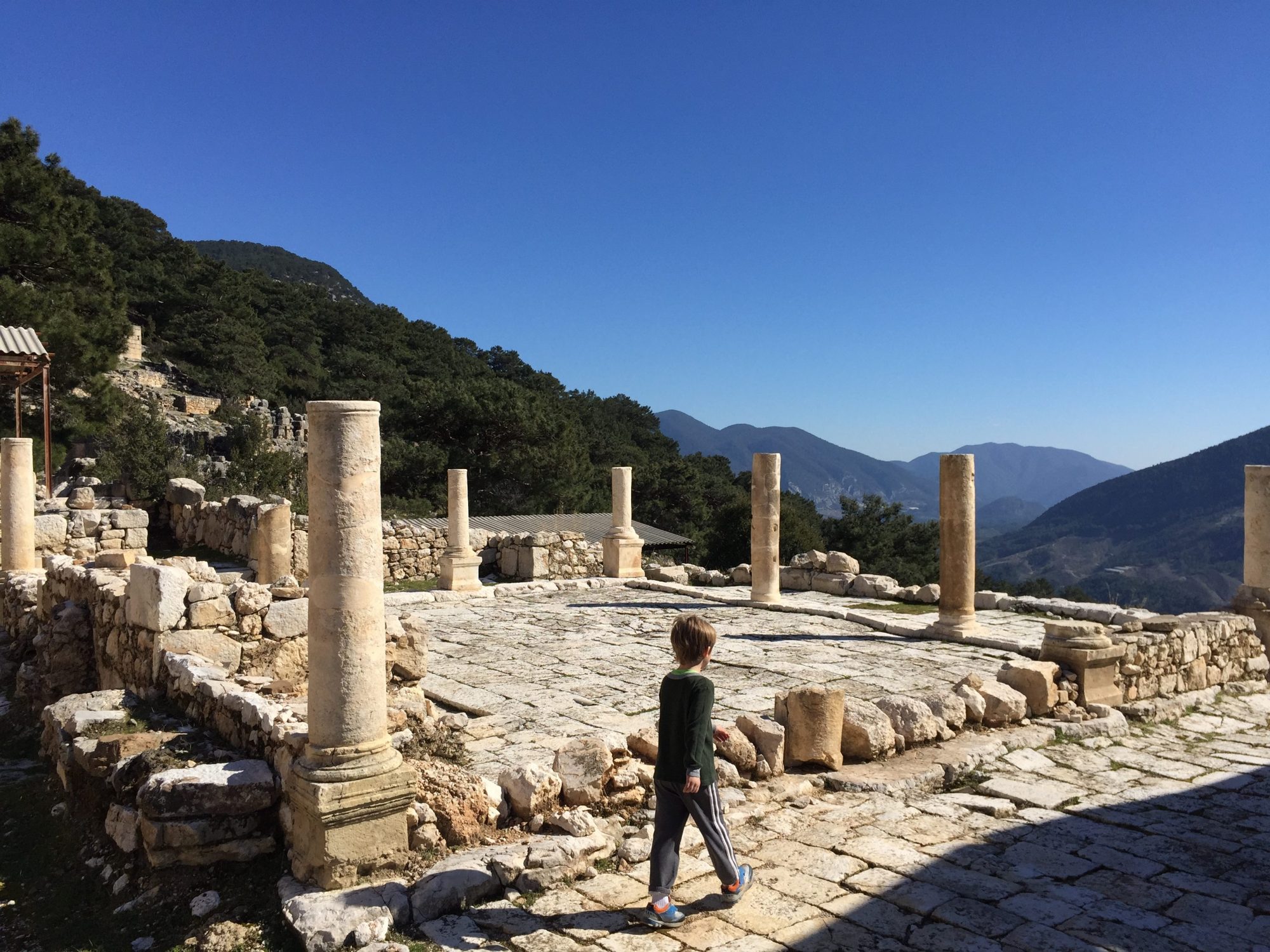Over the next few days, I drive and drive from site to site, interviewing archaeologists about Tlos and Xanthos and Arykanda and Rhodiapolis, which is so little known that I can’t find a link for it. But it’s so awesome, I’m sure I’ll write about it in the future.
There is no radio in the car. The air conditioner only snorts like an disdainful elephant. I sleep in hotels that are neither good nor bad but substantially lonesome somehow. Maybe it’s the clusters of four and five German businessmen talking in the hotel restaurants as they plaster rounds of pita with yogurt and auburgine mezze. When spoken loudly, German sounds angry; when quietly, morose. The best meal I eat is one I find at a roadside mom-and-son restaurant. A boy takes me to a cement tank and gestures that I should choose my dinner. “Kucuk, kucuk,” I urge: small. The boy scoops up a sleek black pond fish with his net. The poor thing emerges 20 minutes later pan-fried on a paper plate, pinning me with its boiled eye. I sip Efes beer so cold it thrills my teeth.
I take sunsets in at Tlos and Arykanda, which are both set into the sides of mountains. Arykanda in particular is amazing. A small 2,000-year-old city that essentially catered to merchants traveling along a main trade artery from the interior to the coast, Arykanda may be the funnest archaeological site I’ve ever visited. Nearly impossible to see from the ancient road, the city climbs indefatiguably into the hills. Following it up and up and up eventually forces you to look down—where are my feet now? oh, the knees… ack, my lungs are burning—but when you can raise your chin again, the reward is one amazing expanse of ruins after another. Best is that they are only revealed one at a time. You encounter the baths and think, simply, Wow. You climb past the baths and then the gymnasium is suddenly in front of you, ornate columns and those lonesome shafts where statuary used to vogue. Oh, okay. Now this is—Wow. Up again and there is the amphitheater. Oh, Christ. Wow. Holy hell.
You sit on the top step and look out at the entire valley spread out before you.
In ancient texts, the Arykandans were scorned as lazy drunkards. Over the years, archaeologists have found thousands of wine bottles and grape presses. So, ahem, chances are they liked to knock back a few. But at sunset, with the Arykandan vineyards, which still exist today, casting shrubby shadows on the mountains staring back at you from the opposite side of the valley, it’s easy to see things from the Arykandan point of view. They felt safe in their mountain city. They could see everybody who passed by. No one could approach unnoticed. The view rocked. All they had to do was wait for the business to come to them. Why not pour a glass of wine and soak in the ambience? Why not have another? Come my friend, life is good, let’s honor it. What More Could We Want? This is Perfection!
The evening is bruising to night, and I’m alone at Arykanda. It’s thrilling. I’d drink to that—Serefe! as the toast goes in Turkey today—if only I had one of those Efes beers.
